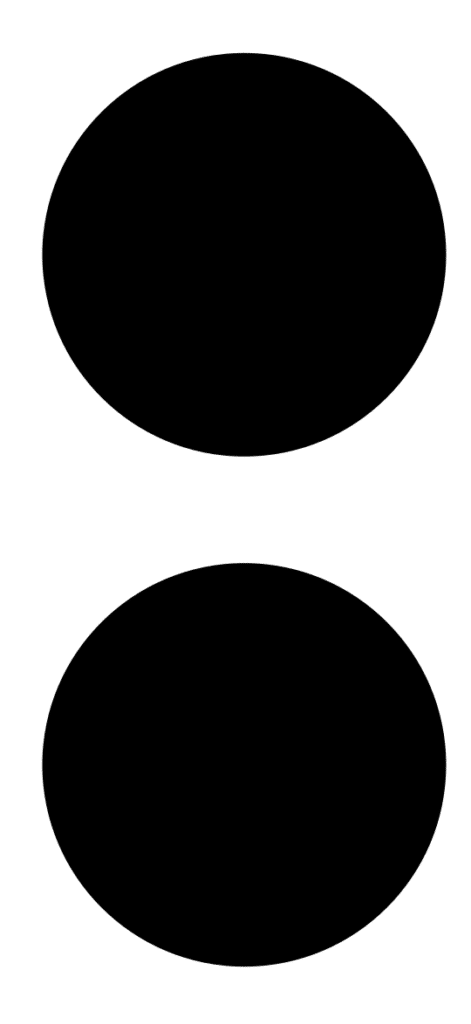Table of Contents
ToggleIntroduction
In architectural visualisation, quick turnaround and permanent relationships with clients are two indispensable assets. At Ratio Visuals, consistent quality delivery of high-class 3D renders enables us to create such partnerships with time. In the recent four years, none has been more exhilarating than the one formed with a popular house designer, who has been relying on our 3D render capabilities to visualise his architectural masterpieces. In this case study, we outline how we worked with this client, which tools and techniques we applied and what benefits our renders brought for interior and exterior spaces.
Client Overview and Project Scope
This project is based on exterior observations of house designs made by our client, who is an architect and specialises in house design. For instance, in the last four years, we have implemented different projects for him, both exterior and interior renders. We have worked on his 2D drawings where we have to convert them into 3D renderings that demonstrate the aesthetic and functional aspects of the designs.
On an average, the client allocates us a typical project scope that defines rendering of about 15 to 20 images, with respect to interior spaces like kitchen, dining and living rooms and the outside area as well. We also enhance our renders with a simple site which enhances this view of the house providing a full depiction of the house in its geography.
Tools & software
In order to complete these realistic looking images, we work with numerous software, almost all of industry standard these days. Each software is pivotal within the entire process from preparing 2D files through the construction of the photorealistic image.
- AutoCAD: On AutoCAD, we open the 2D files the client provides namely Autocad layout plans, sections, and garage details that were done on a 2D plane and help a lot when modeling in 3D on the computer.
- SketchUp: The next step after working with 2D drawings in Autocad, is importing them to sketchup, which is the most important step of 3D modeling. We were able to produce accurate and elaborate models of the proposed designs in the client’s taste using Sketchup.
- Lumion: The next step after working with 2D drawings in Autocad, is importing them to sketchup, which is the most important step of 3D modeling. We were able to produce accurate and elaborate models of the proposed designs in the client’s taste using Sketchup.
Project Workflow
1. Initial Client Input and File Handling

Every project starts by receiving 2D PDF files from the client. These files contain floor plans, elevation details, and garage design documents. Apart from that, the client also provides us with a colour inspiration photo that categorises the colour scheme and materials to be used in the project. This inspiration photo is important so that in the end the renders correspond with what the client is after.



After we obtain these files, our department takes care of importing the PDFs into AutoCAD. This step is important, as AutoCAD helps in ensuring that we have correctly interpreted all the 2D designs into CAD files with all the measurements and layout aspects correct. These CAD files are what we use as the basis of the 3D model that we will build afterwards.

2. From 2D to 3D: 3D Modelling in SketchUp
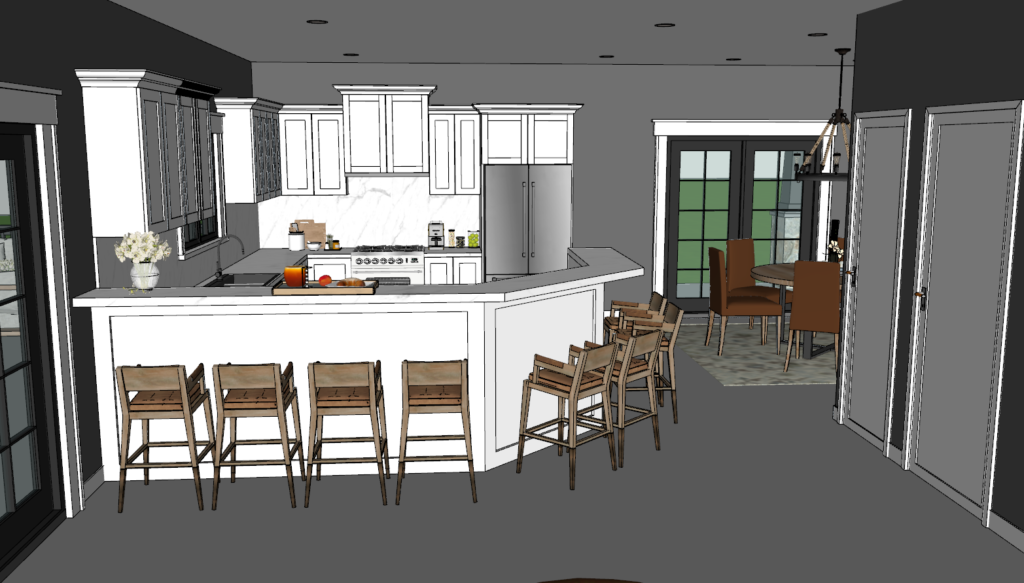
When done with the conversion of the 2D file using AutoCAD, the next step is to export the files to SketchUp. This is the stage where the actual change occurs. The 2D files will facilitate the modelling of the third dimension, and gradually and directly, the third dimension is assembled together in view that every dimension of the figure by all means possible will be accurate.
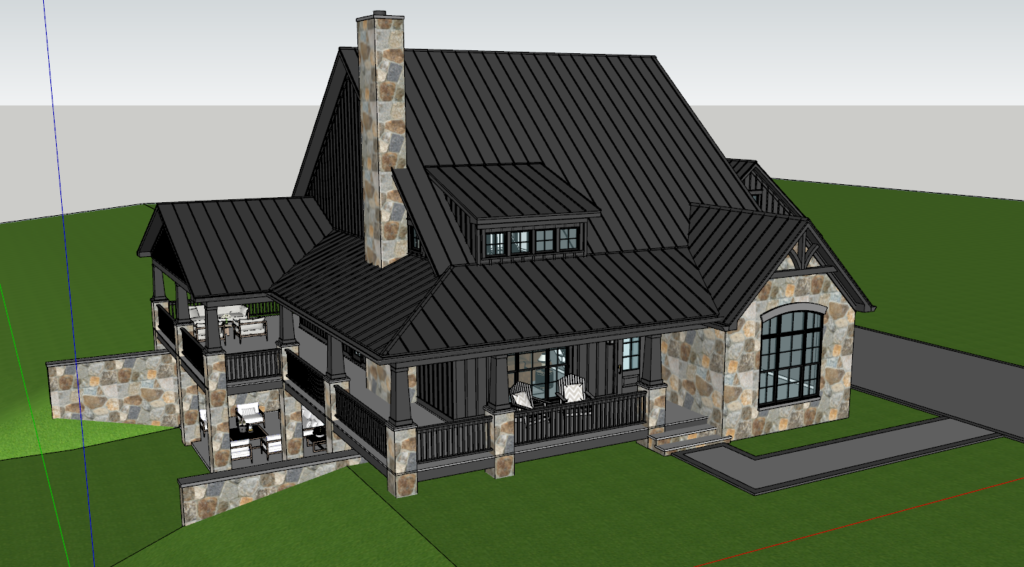
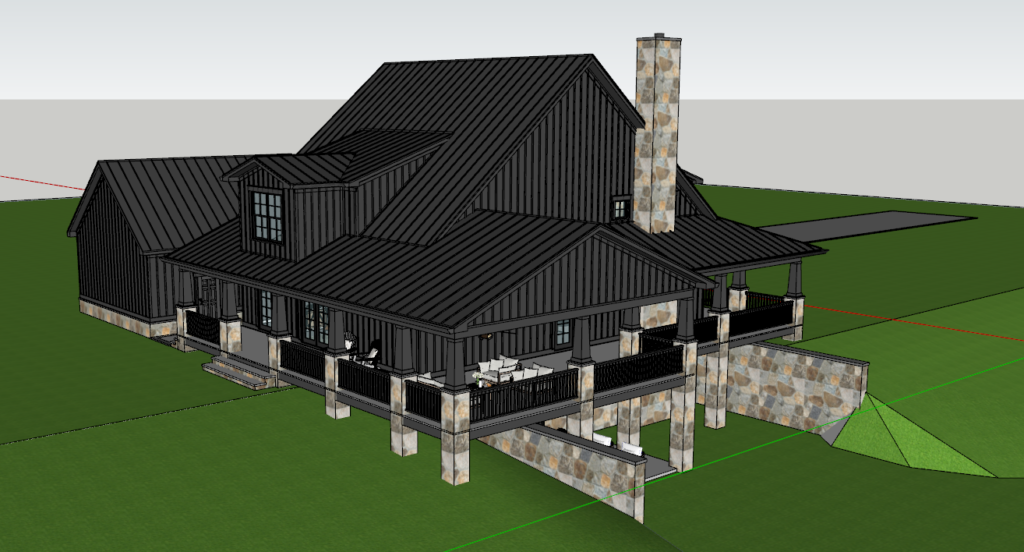
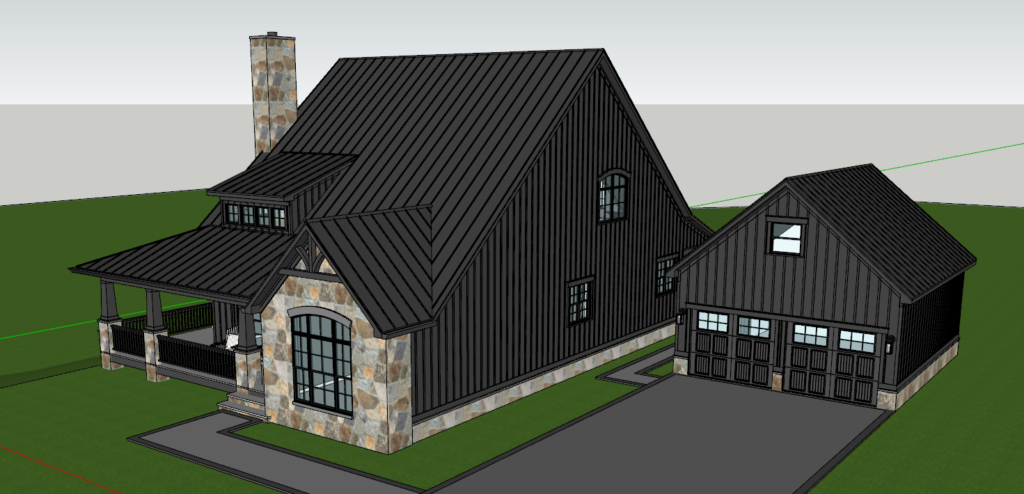
The next procedure we do is exporting the completed model out of Sketchup to other rendering software. At this point is where the actual scene starts coming into place. At Lumion, presented materials such as wooden, stone or metal are fixed on several elements of the model. Materials got their reference from the given colour’s inspiration photo provided by the client, hence the final renders were expected to fit the theme.
Lighting is one of the most important factors in the rendering process. At this stage, we change the values in the Lighting tab in Lumion to simulate the effect of “daylight” and thus increase the realism of the architectural scenes as both the interiors and exteriors. Correct lighting does not only emphasise the architectural solutions but also makes the interiors pleasant and cosy.
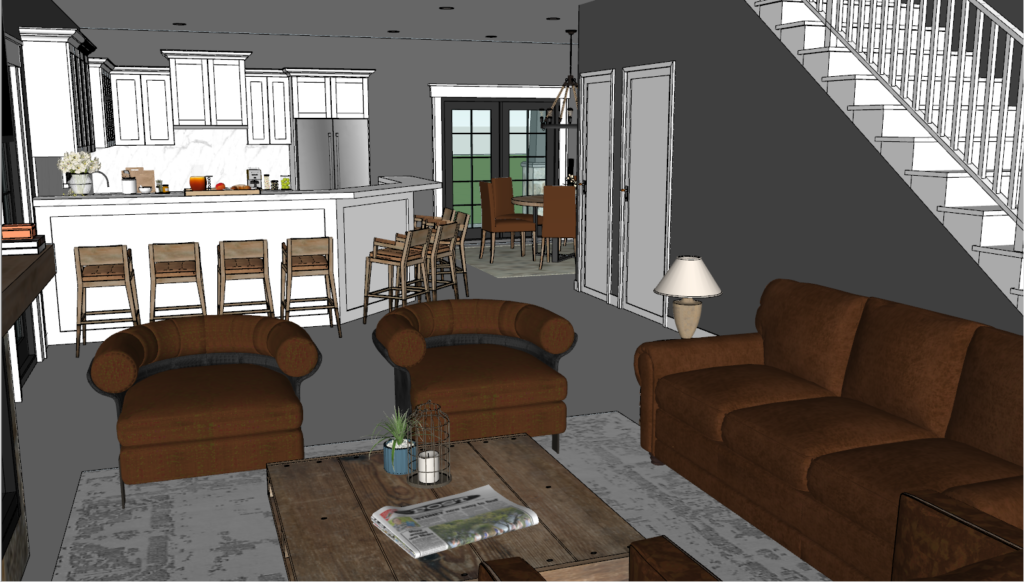
In terms of landscape structures, we usually add the minimum items such as trees, grass and bushes. Use of these environmental aspects gives a better picture of the home of how it is placed in its district. Besides, we customise the landscaping in accordance with clay with an aim of providing a sense of satisfaction for the entire composition.
3. Increasing the level of detail: Materials, lighting, and landscaping in Lumion
The next procedure we do is exporting the completed model out of Sketchup to other rendering software. At this point is where the actual scene starts coming into place. At Lumion, presented materials such as wooden, stone or metal are fixed on several elements of the model. Materials got their reference from the given colour’s inspiration photo provided by the client, hence the final renders were expected to fit the theme.
Lighting is one of the most important factors in the rendering process. At this stage, we change the values in the Lighting tab in Lumion to simulate the effect of “daylight” and thus increase the realism of the architectural scenes as both the interiors and exteriors. Correct lighting does not only emphasise the architectural solutions but also makes the interiors pleasant and cosy.
In terms of landscape structures, we usually add the minimum items such as trees, grass and bushes. Use of these environmental aspects gives a better picture of the home of how it is placed in its district. Besides, we customise the landscaping in accordance with clay with an aim of providing a sense of satisfaction for the entire composition.
4. Rendering and Final Delivery
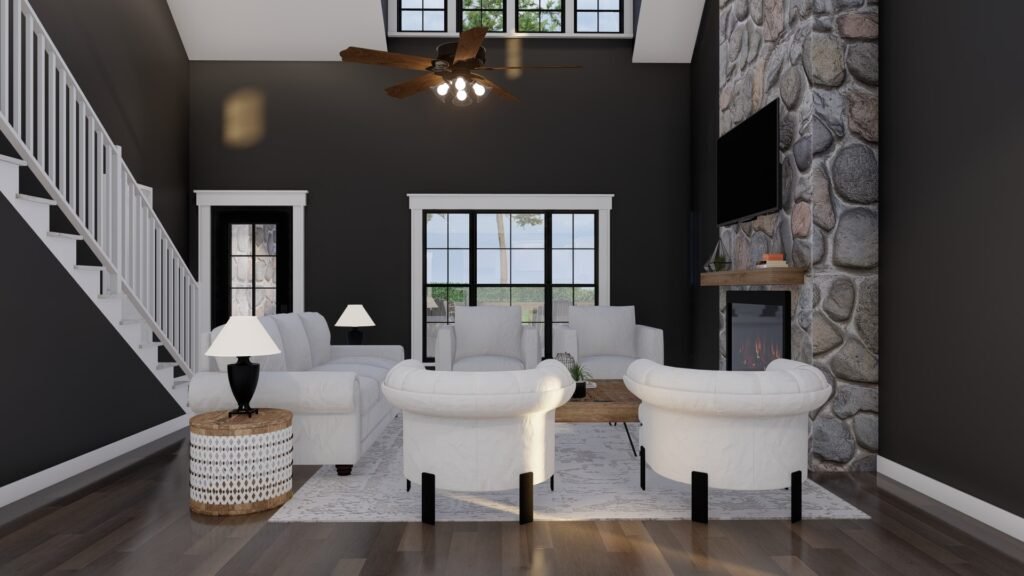
Having prepared everything in the required program, we move on to rendering. The duration of the rendering procedure may take hours depending on how elaborate the scene about to be rendered is and the detailing. And although rendering is time consuming, Lumion has the best rendering engine, hence, enabling us to provide our clients with ready images within the least time possible.
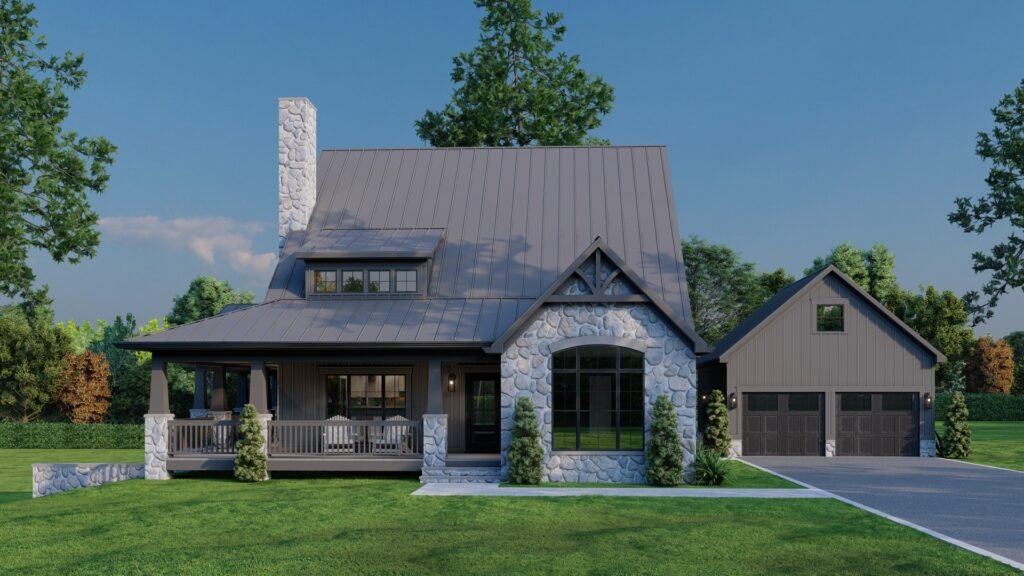
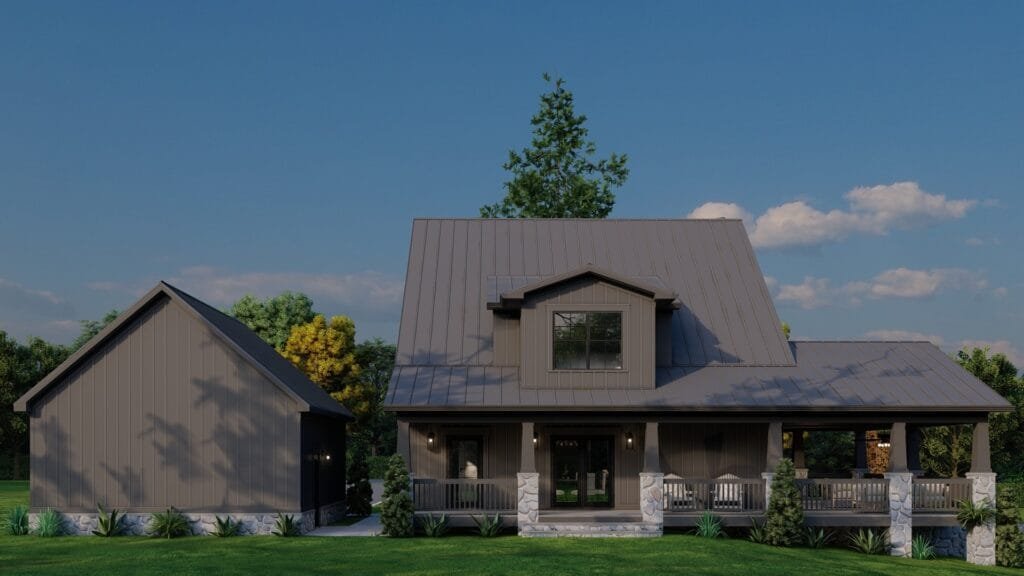
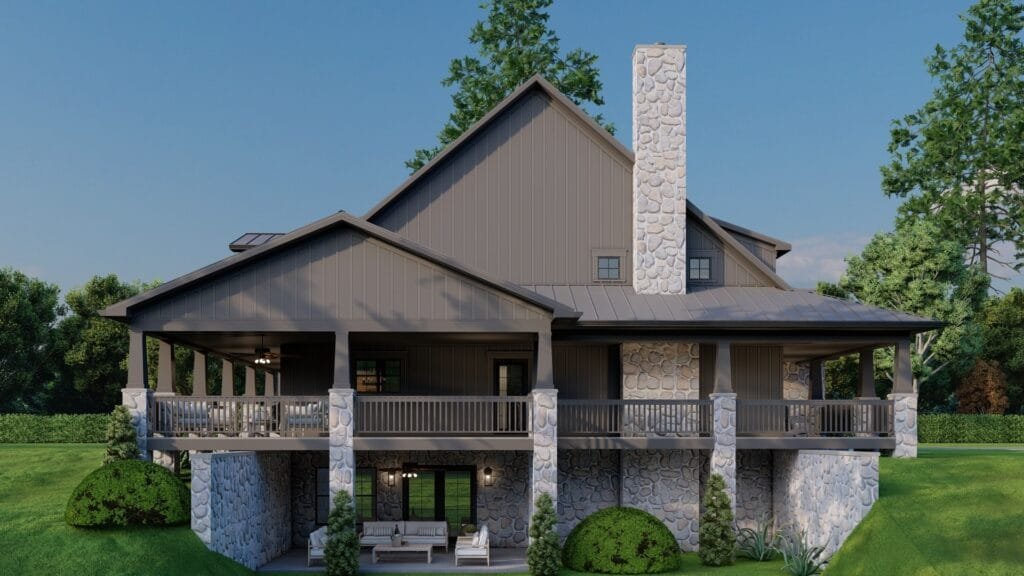
And generally, we submit the final, delivered renders of the images within three days of receipt of the 2D files. This fast response is one of the reasons why we have worked with this client for about four years now. There is now a culture at our organization of delivering work on time and this has in turn helped us create trust.


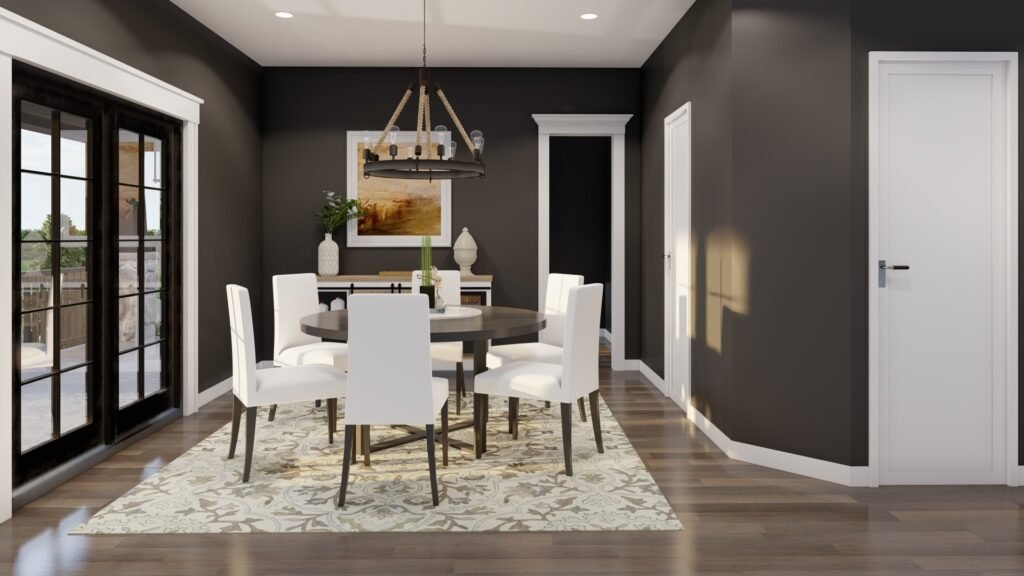
Deliverables and Results
In any project, ABN is ready to provide between 15 to 20 high-quality interior and exterior renders. Within the interior rendering, kitchen and dine-in living room are to be included while the garage and front elevation as well as landscaping are included in the exterior rendering of the house. Individual rendering explains the architectural components and overall design of the house which is supposed to be photogenic.
These renders are relatively cheaper, but at the same time, they are of high quality and realism. Affordability without lack of reliability with regard to the partner has been what has made the client be comfortable with the partnership since his design requirements are always met comfortably without going overboard with the finances.
These renders have assisted the client in showcasing his designs to home-owners and other stakeholders even at this pre-construction stage, enabling the home-owners to see and understand what they will get once construction is complete. Due to the photorealistic nature of the renders, clients are able to see how their home will look like, reducing the chances of changes being made during the construction process.
The Significance of Teamwork and Regularity
This partnership has been successful largely due to our constant engagement with the customer. Towards his communication, as we undertook work projects, we were keen on reassuring him that the end renders would in the end satisfy him, as we kept on informing him on every project’s progress.
Another vital aspect is related to consistency. For the last four years, we have never failed to render images on schedule and of high quality for every project. This has made his relationship with us improve, as we have become his first render partner for all his projects.
Looking Forward: The Future of Our Partnership
With the continued expansion of the client’s business and their increasing clientele and projects that they undertake, the satisfaction that is derived from taking up their projects is overwhelming. Even at Ratio Visuals, we intend to grow with the clients and enhance our operational systems as well as embrace new concepts in architectural visualisation. In the next few years, we plan to enhance our service structure to include more advanced services such as the provision of 360 degree renders and virtual reality tours as well as interactable 3D models that shall add even more value to our clients
Conclusion
When it comes to the client’s satisfaction, there is no doubt that we have built our company upon firm client-oriented approaches. Growing together with the house design company has demonstrated the importance of confidence, teamwork, and no-fail results. In the past four years, we have been his sponsor for quality 3D renders that has aided him greatly to eg. speak more about his designs. Using Autocad, Sketch Up and Lumion as tools, we could have his 2D designs rendered in cool 3D images.
We hope to further this collaboration and assist our client in the success of his future endeavours. In case you wish to know more about our activities or wish to get familiar with examples of the renders we can create, please visit our site or contact us.
